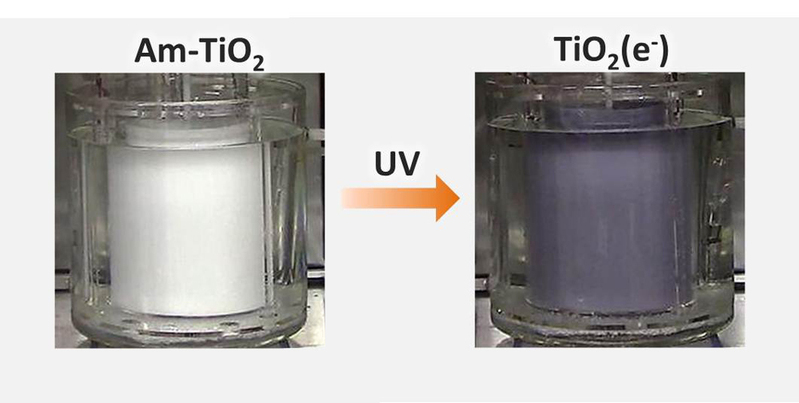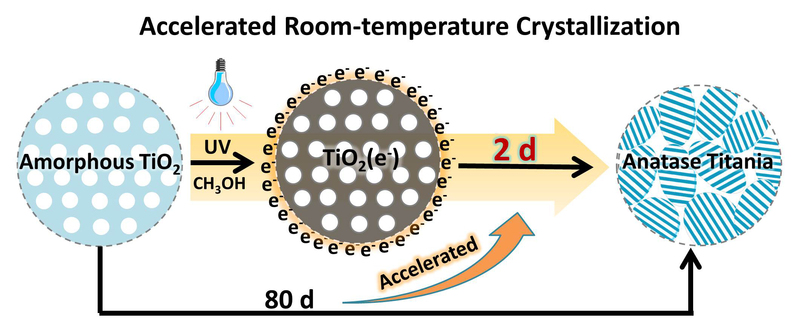Professor Mi Qixi’s group, in collaboration with researchers from Shanghai JiaoTong University and Jilin University, recently published an article titled “Accelerated room-temperature crystallization of ultrahigh-surface-area porous anatasetitania by storing photogenerated electrons” in Chemical Communications. A technology for storing photogeneratedelectrons is applied for accelerating room-temperature crystallization of titania, and the resulting porous anatase titania exhibits ultrahigh surface areas up to 736 m2g-1. Among those responsible for this work, Research Assistant Professor Su Juan is the first author, Assistant Professor Mi Qixi and SJTU Professor Chen Jie-Sheng are both corresponding authors, and ShanghaiTech is the first affiliated institution.
Poroustitania is one of the most important synthetic functional materials because of its excellent physical and chemical properties, and large surface area. However, conventional methods for preparing porous titania usually involve heat-promoted crystallization, which brings about such side effects as lowered surface area and decreased porosity, thus reducing the material’s performance. Milder synthesis routes are needed to maintain the composition, morphology, and structure of the material, and are thus beneficial for producing materials with special properties and functions.
Thanks to their new method for storing photogenerated electrons, the duration of sucha mild room-temperature crystallization process is drastically reduced from 80 to 2 days (see Figure). The as-prepared porous anatase titania materialspossess ultrahigh surface areas and high photocatalytic activity. This facile process permits easy scale-up and is promising for wide applications in bothfundamental research and industrial productions.
This research project is financially sponsored by the National Science Foundation of China and by start-up funding from ShanghaiTech.
Read more at: http://pubs.rsc.org/en/content/articlelanding/2014/CC/C6CC08892A


Figure. (a) Process for storingphotogenerated electrons in titania;(b)Schematic representation of the acceleratedroom-temperature crystallization of titania by storingphotogeneratedelectrons.
- About
- News
- Faculty
- Research
-
Academics
- School of Physical Science and Technology (SPST)
- School of Life Science and Technology (SLST)
- School of Information Science and Technology (SIST)
- School of Entrepreneurship and Management (SEM)
- School of Creativity and Art (SCA)
- Institute of Humanities (IH)
- School of Biomedical Engineering (BME)
- Shanghai Institute for Advanced Immunochemical Studies (SIAIS)
- iHuman Institute
- Institute of Mathematical Sciences (IMS)
- Center for Transformative Science (CTS)
- Institute of Carbon Neutrality (ICN)
- Shanghai Clinical Research and Trial Center
- Tech Transfer
- Global
- Campus Life

